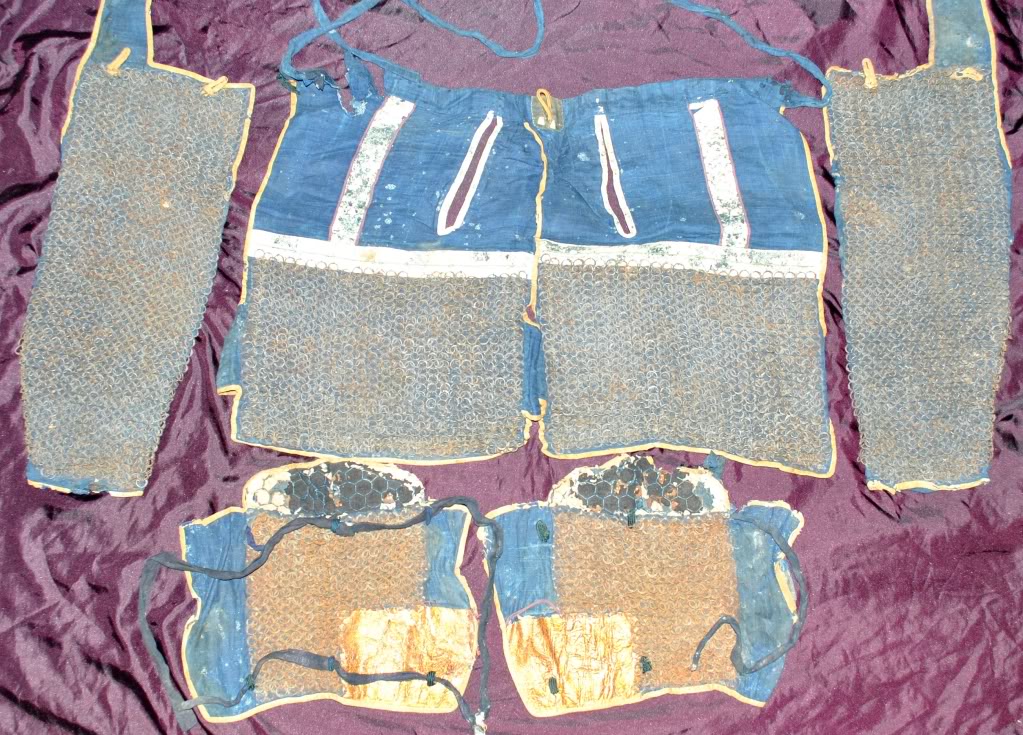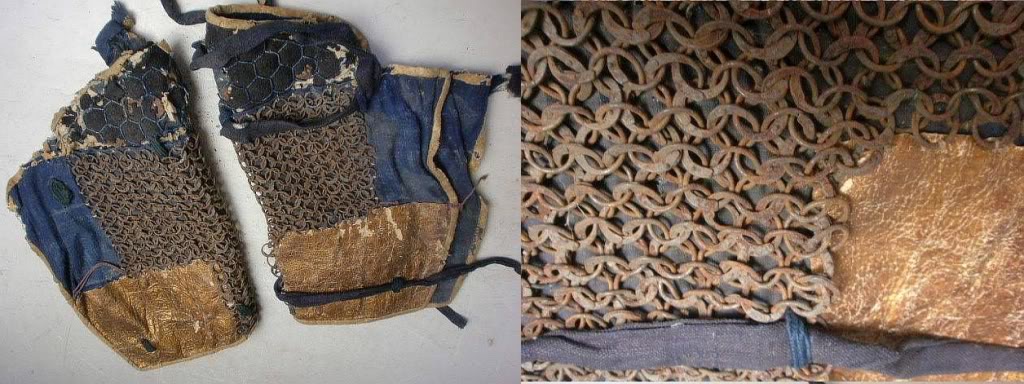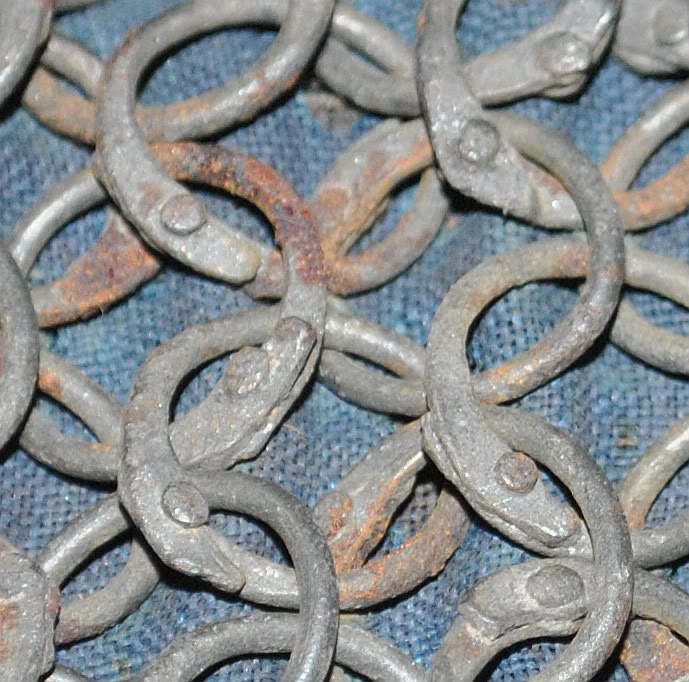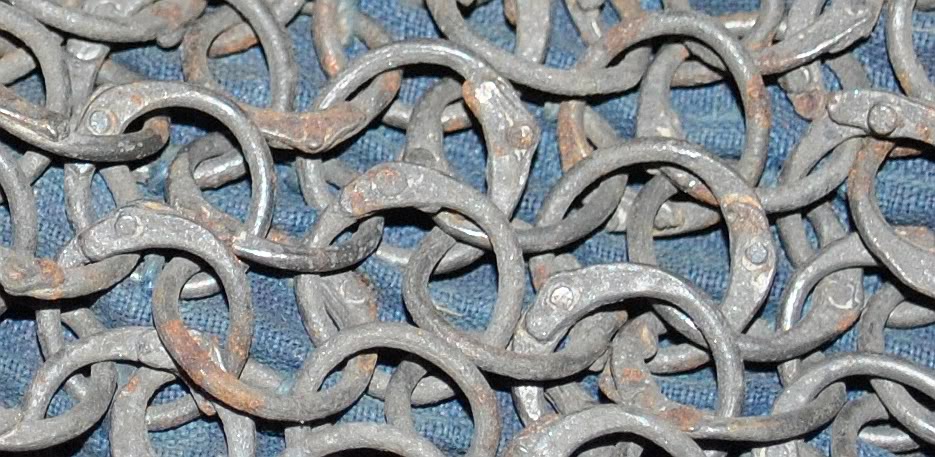Publisher London : Holland Press, 1963. pp 83-85.
| Quote: |
| "karakuri-namban (riveted namban), with stout links each closed by a rivet. Its invention is credited to Fukushima Dembei Kunitaka, pupil, of Hojo Awa no Kami Ujifusa, but it is also said to be derived directly from foreign models. It is heavy because the links are tinned (biakuro-nagashi) and these are also sharp edged because they are punched out of iron plate." |
George Cameron Stone mentions a "kote with riveted European-style 4-in-1'' image # 475.10 in his book "A Glossary of the Construction, Decoration and Use of Arms and Armor: in All Countries and in All Times". The only image of rivered kusari I have seen published is in "Japanese Arms & Armor Introduction by Robinson, H Russell", 1969 P.58 , the image is listed as being an "Early 19th century breastplate from Museo Orientale Venice", in addition Dave Thatcher told me that he has seen this type before in Sasama's big book which I have do not have a copy of and have not seen.
The remaining question is whether this example was of Japanese manufacture or was this some foreign type acquired by an Japanese armor maker and used to make this particular armor. The links are not lacquered black as other types of Japanese mail, the links have the appearance of being possibly tinned or galvanized and as to the comparison of other types of riveted mail, the links do not look like eastern riveted mail samples that I have seen or like European riveted mail links. I showed some images of the links to Ian Bottomley and he was kind enough to give an opinion the this looks like it may be riveted mail of Japanese manufacture due to the fact that in Eastern mail the riveted links are connected by solid links and with European riveted mail the links are riveted with a wedge shaped rivet. The mail I have was made with eastern type rivets but all the links are riveted with no solid links.
Indian riveted mail

European wedge riveted mail

 [/quote]
[/quote]
Sangu

Kote

Haidate

Suneate




